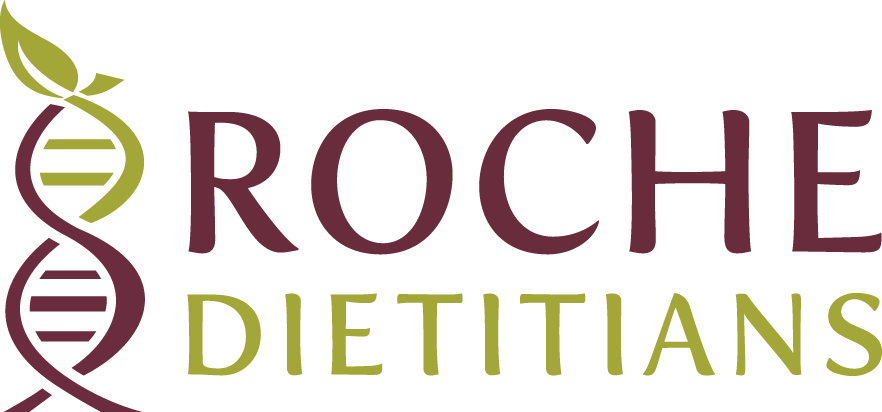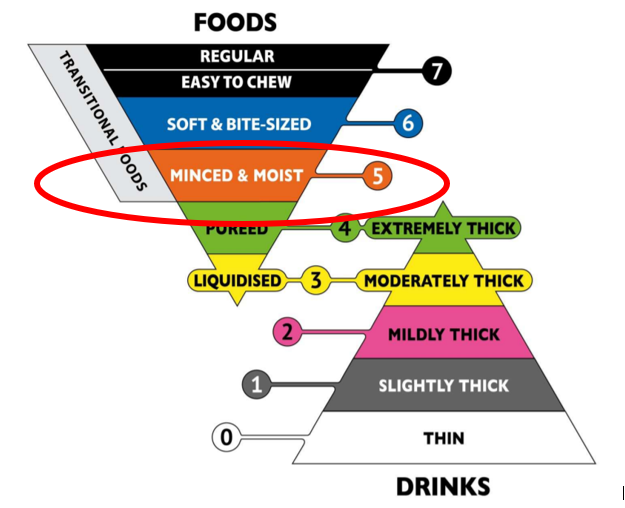Guide to IDDSI Pureed (Level 4)
You’re likely already serving pureed foods, but the term “pureed” can be defined in many ways. Not only does this create confusion when receiving diet orders from other facilities, but it also puts individuals with dysphagia at risk for choking.
The International Dysphagia Diet Standardization Initiative (IDDSI) Committee developed guidelines for serving texture-modified foods and thickened liquids to individuals with dysphagia around the world. (Yes, around the world!) The initiative challenges us to prioritize safety and prevent the risk of choking, giving us a solution to the outdated, ambiguous language like “soft”, “chopped”, and “nectar-thick” that varies between facilities.
In order to eliminate confusion and promote patient safety, the new IDDSI standards establish unified principles for all food service operations to follow
Consistent diet terminology
Reliable testing methods
Standardized definitions of the diet
We understand that learning about IDDSI is a complex undertaking. We’ve found that having a deep understanding of each IDDSI level is a good place to start. This post will walk you through IDDSI Pureed (Level 4) in detail, including:
Who is this level for?
How is this level characterized?
How do we test foods to fit within this level?
READ MORE: Your Ultimate Guide to IDDSI
Let’s start with the basics.
The basics of IDDSI Pureed (Level 4)
The IDDSI Framework consists of eight levels (Level 0-7), ranging from Thin Liquids (Level 0) to Regular (Level 7) texture foods.
In the graphic below, you can see where IDDSI Pureed (Level 4) is located within the IDDSI Framework. Each level has a unique name, color, and number in order to limit errors in prescribing, identifying, preparing, and assembling dysphagia diet orders.
This level is represented by the number 4 and the color green. As with all other IDDSI food levels, it is shown within the downwards pointing triangle, while all IDDSI drink levels are represented with an upwards pointing triangle.
The abbreviation for IDDSI Pureed (Level 4) is PU4. Your foodservice operation might use the PU4 abbreviation in many places, such as diet order communications, tray/service tickets, and in dining menu software or electronic health records.
Note: You may notice in the graphic above that IDDSI Level 4 is connected between the food and drink levels: Pureed Foods and Extremely Thick Drinks. This is because they have similar flow/textural characteristics and descriptions. But it’s important to note that just because they are connected, it doesn’t mean that they need to be prescribed together. An individual’s ability to manage food and drinks must be assessed independently.
Who IDDSI Pureed (Level 4) is for
Individuals who are served IDDSI Pureed (Level 4) have a serious swallowing disorder called dysphagia. This means they cannot safely chew or swallow, so the food we serve must be smooth, moist, and prepared ready to swallow to minimize their risk of choking.
Individuals with dysphagia who need IDDSI Pureed (Level 4) have the following problems and/or limitations:
Reduced tongue control
Pain or difficulty swallowing
Does not chew well
Cannot form a bolus
Missing teeth, dentures not fitted
For these reasons, individuals with dysphagia on IDDSI Pureed (Level 4) require smooth, moist, pureed foods in which only the tongue is needed to move food back and forth for swallowing.
Characteristics of IDDSI Pureed (Level 4)
What does IDDSI Pureed (Level 4) look and feel like? When preparing food for those we serve, we typically pay attention to the appearance, taste, and temperature. IDDSI now introduces us to new and more specific characteristics like particle size, moisture, stickiness, and softness.
Thanks to IDDSI’s unified standards, foods on IDDSI Pureed (Level 4) will maintain the same characteristics no matter where in the world you serve pureed foods. These characteristics include:
Smooth and free of lumps
Thick enough to hold shape on a plate or spoon
Falls off spoon in a single spoonful when tilted
Can be piped, layered or molded because it retains its shape, but should not require chewing if presented in this form
Cannot be sticky
Moist
Cannot have separate thin liquids (solids and liquids must be one)
Cannot be poured, slow movement
Does not require biting or chewing
Eaten with a spoon
Cannot be drunk from a cup or sipped from a straw
Example: Pureed Carrots (prepared with cooked carrots, vegetable broth, and commercial food thickener)
Testing methods for IDDSI Pureed (Level 4)
Testing is a new concept that shifts the way we do things in the kitchen. We know it’s not easy to make changes and get everyone on board, but testing is worth it because it’s all about safety.
The overall objective of testing is to make sure the pureed foods we prepare meet the characteristics for IDDSI Pureed (Level 4). Therefore, foods must pass the following IDDSI tests:
Appearance: Smooth, no lumps, or thin separate liquid
Fork Drip Test: Food holds shape as a mound above the fork. A small amount may flow through and form a short tail below the tines of the fork but it does not flow or drip continuously through the tines.
Spoon Tilt Test: Food is cohesive enough to hold shape on the spoon. It can slide off easily when you tilt or gently flick the spoon over a plate with very little food left on the spoon. However, a thin film of residue left on the spoon is acceptable, but you should not be able to see the spoon through the film and it should not be firm and sticky. It may slightly spread out or slump very slowly on a flat plate.
Testing is done during preparation and again at the time of service. It should be done under the same conditions we intend to serve our food -- including consistent temperature. Remember, temperature and holding time will affect the consistency of food. For example, chilled applesauce will likely pass the IDDSI Fork Drip Test. However, at room temperature, it may become thinner and drip between the tines of the fork, which makes it more difficult to swallow and could induce choking.
Also it is important to note that on the IDDSI.org Audit Tool for Pureed, Level 4 it states: “A puree needs to be able to be put in the mouth and swallowed whole. No chewing and no bolus formation skills should be needed to eat this consistency.” And: “If the sample is gelled or compressed so that it is firm enough to pick it up with your fingers and bite a piece of it at serving temperature, the sample is not a puree and poses a choking risk.” So be careful to not over thicken or over gel foods.
READ MORE: The five key components you need to train food service workers on IDDSI
Learning more about IDDSI Pureed (Level 4)
IDDSI is an important tool in making sure that the food we serve is safe for individuals with chewing and swallowing problems. It’s vital that you and your team are well-versed in understanding IDDSI.
However, IDDSI can be complex to learn. That’s why we created the Roche Dietitians “We Test for Safety” IDDSI Training Program. This online, on-demand program will train your team on the new IDDSI standards in a straightforward, easy-to-understand way. From providing an overview of IDDSI with our Introduction Course to more comprehensive courses on each IDDSI level, including the IDDSI Pureed (Level 4), your team will learn everything they need to know about the new IDDSI standards.
And the Roche Dietitians “We Test for Safety” IDDSI Training Program is not just about teaching your team about IDDSI — it empowers you to develop a culture of safety in your organization. Through this training, you will build a sustainable IDDSI culture where everyone knows their role in keeping your residents safe.





